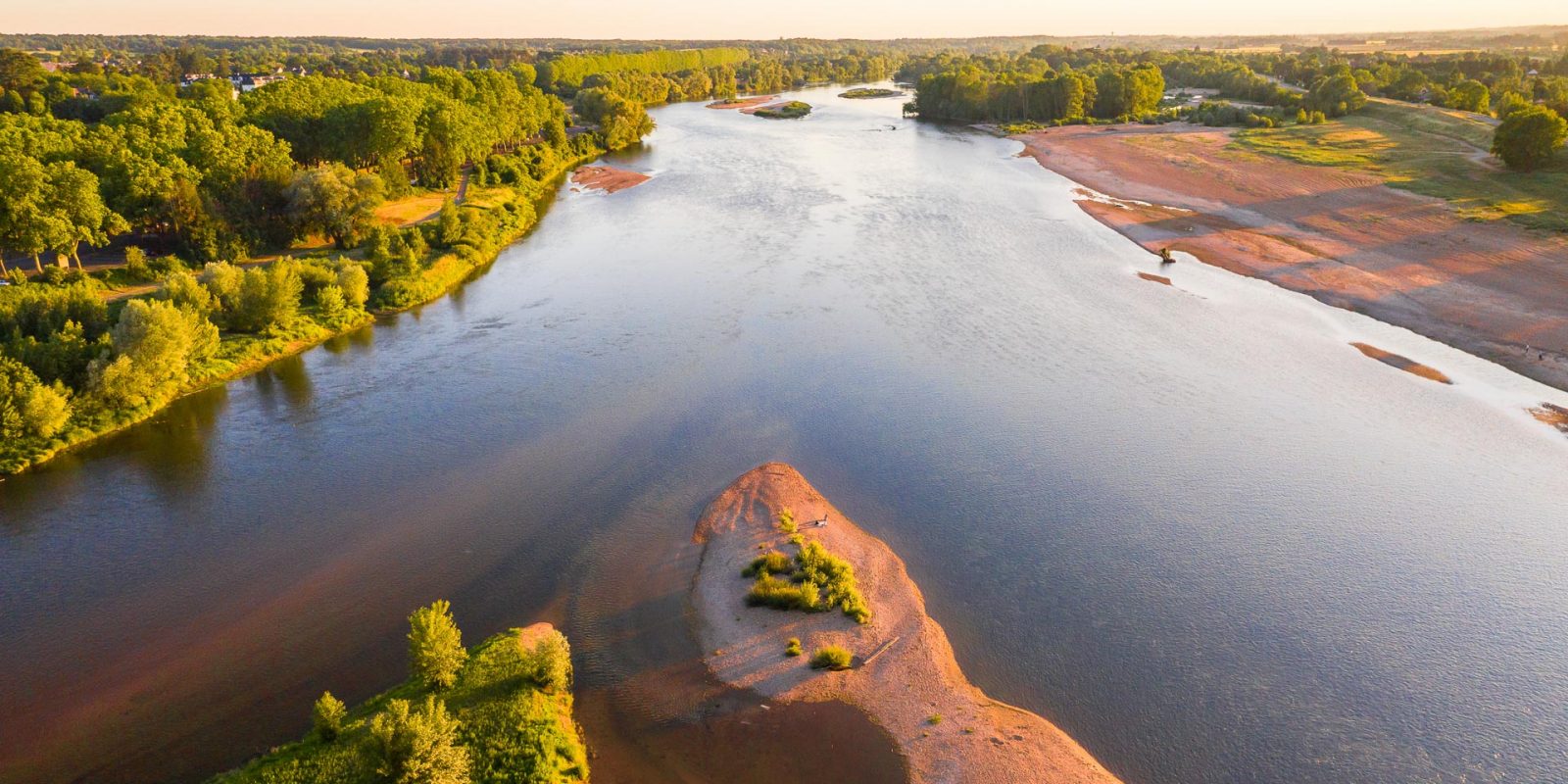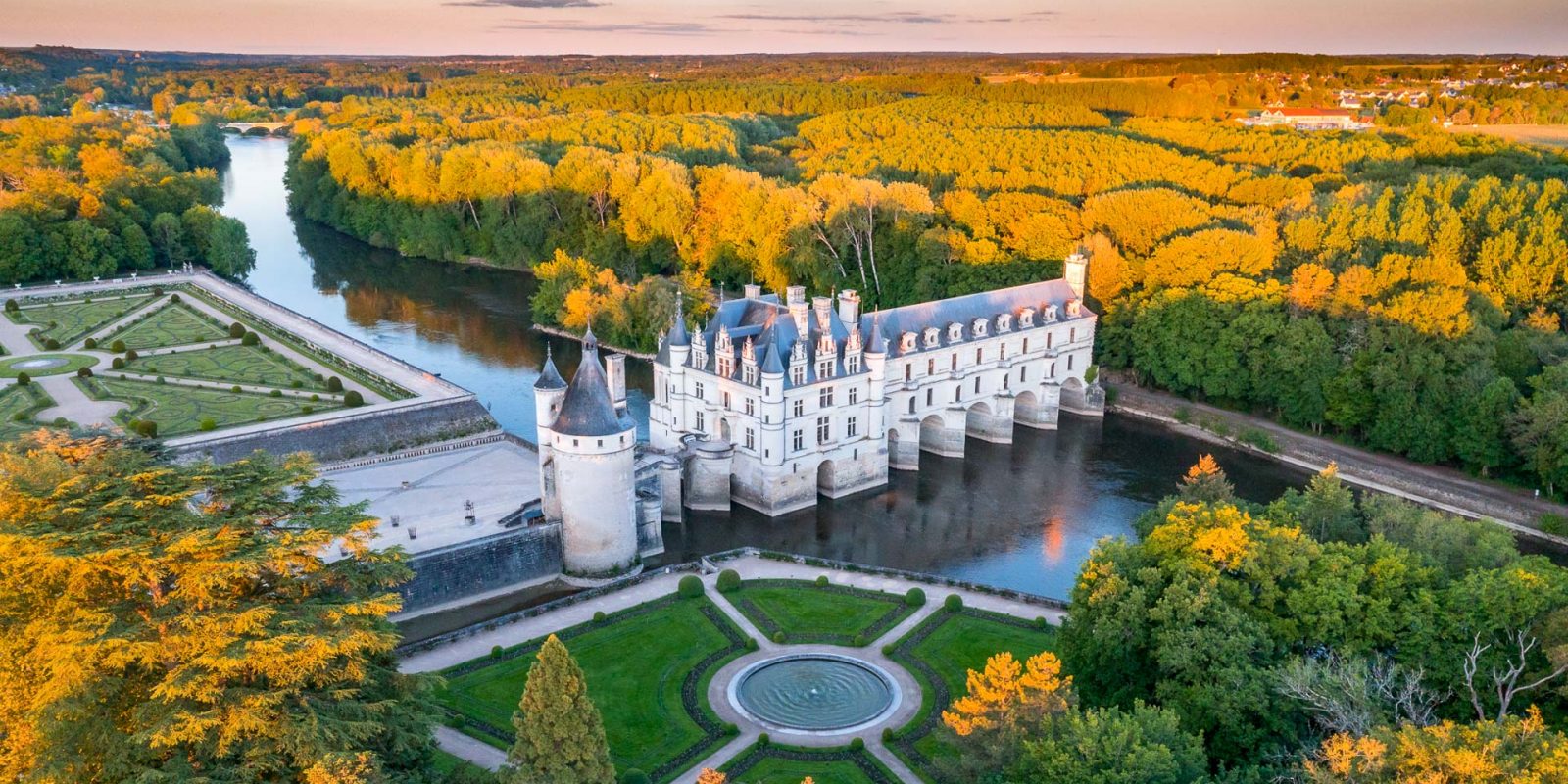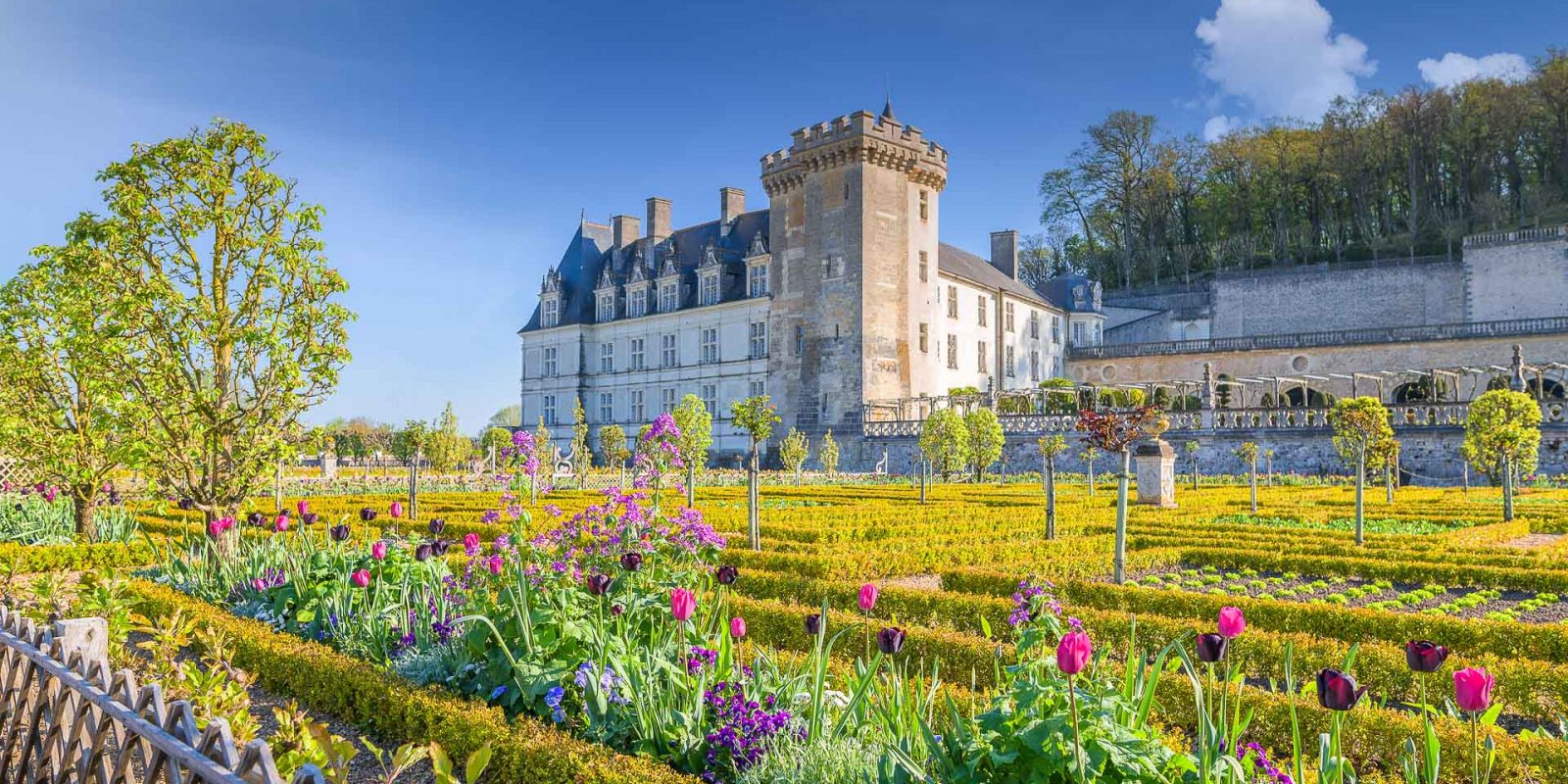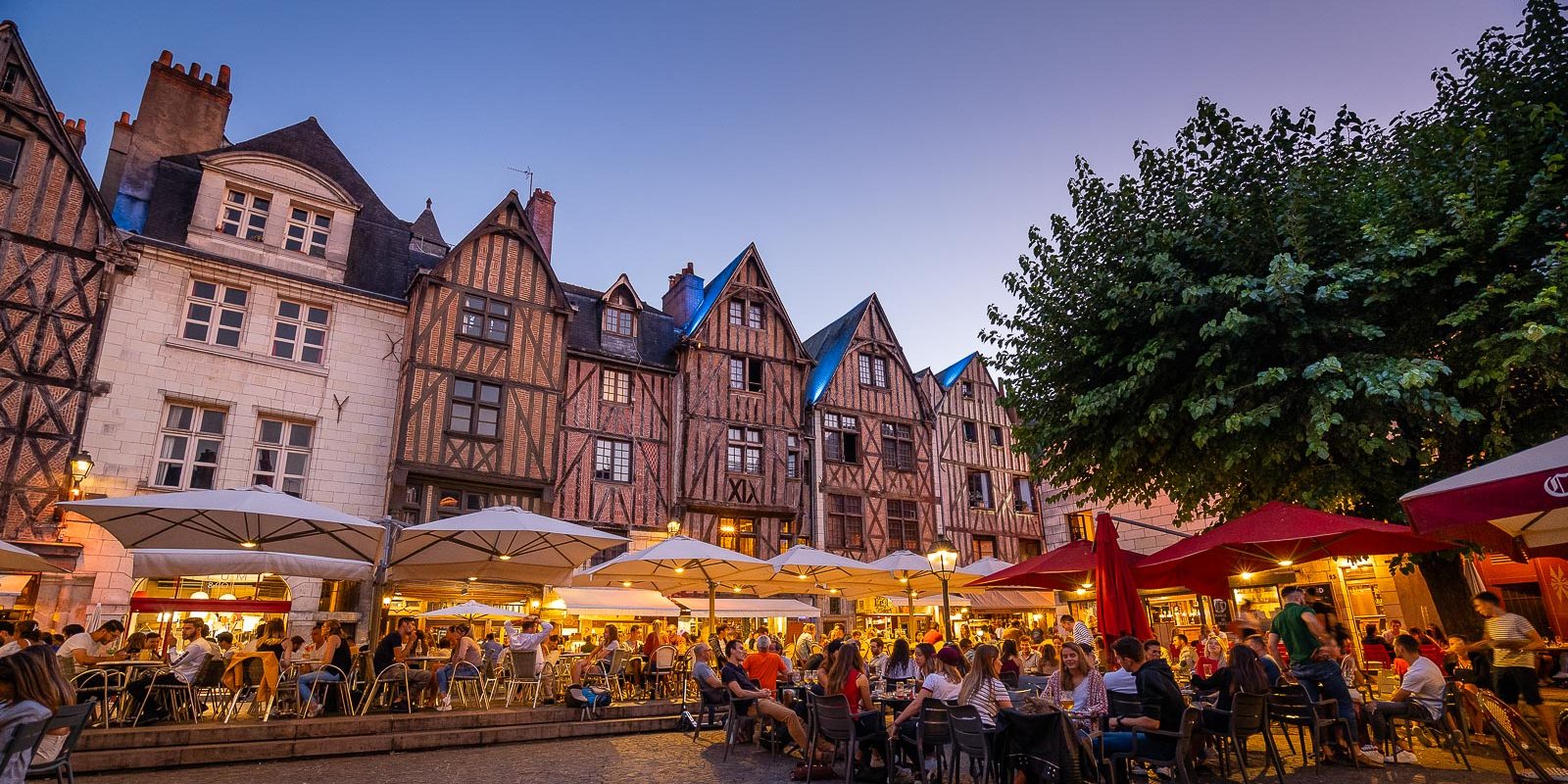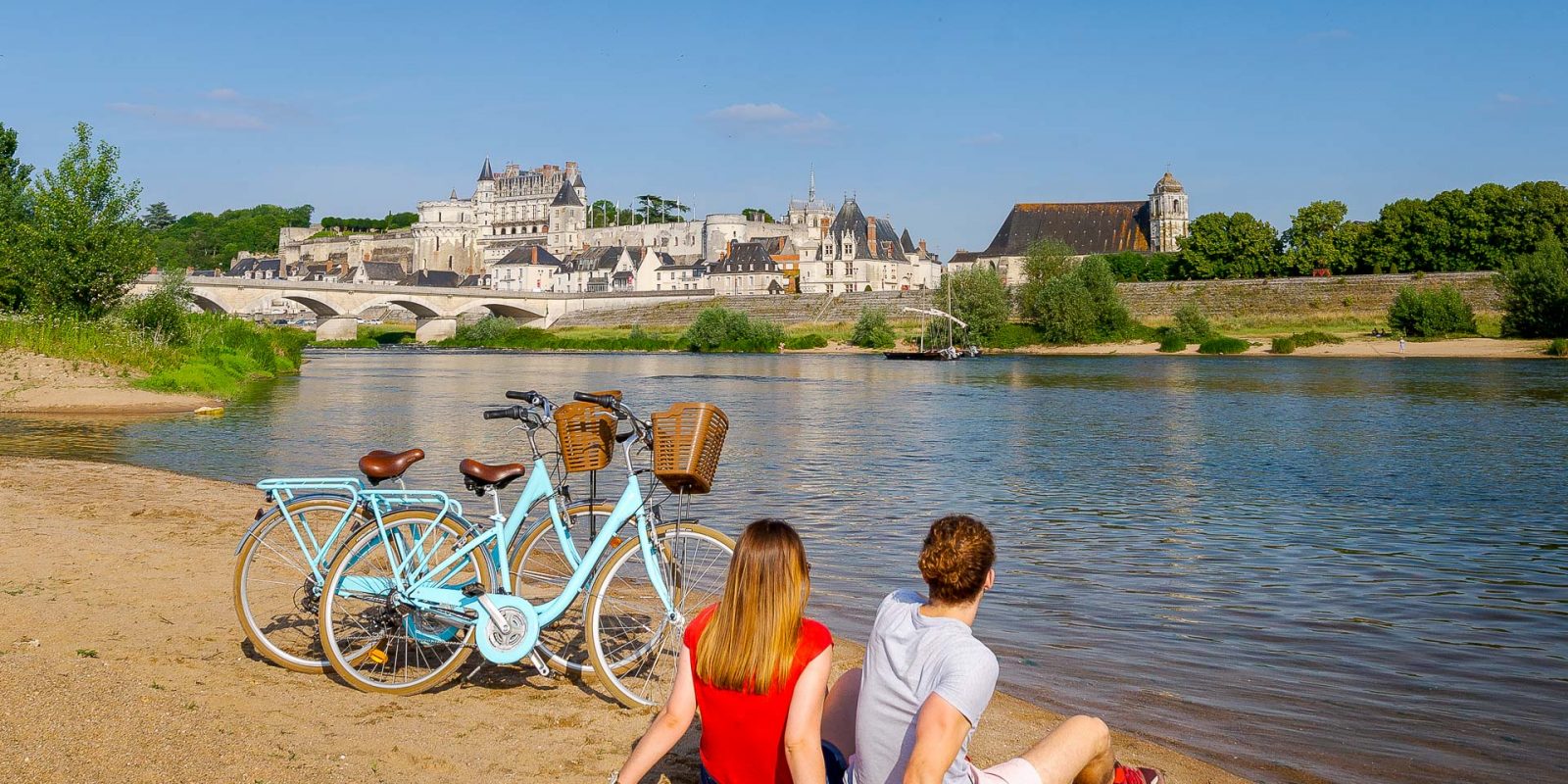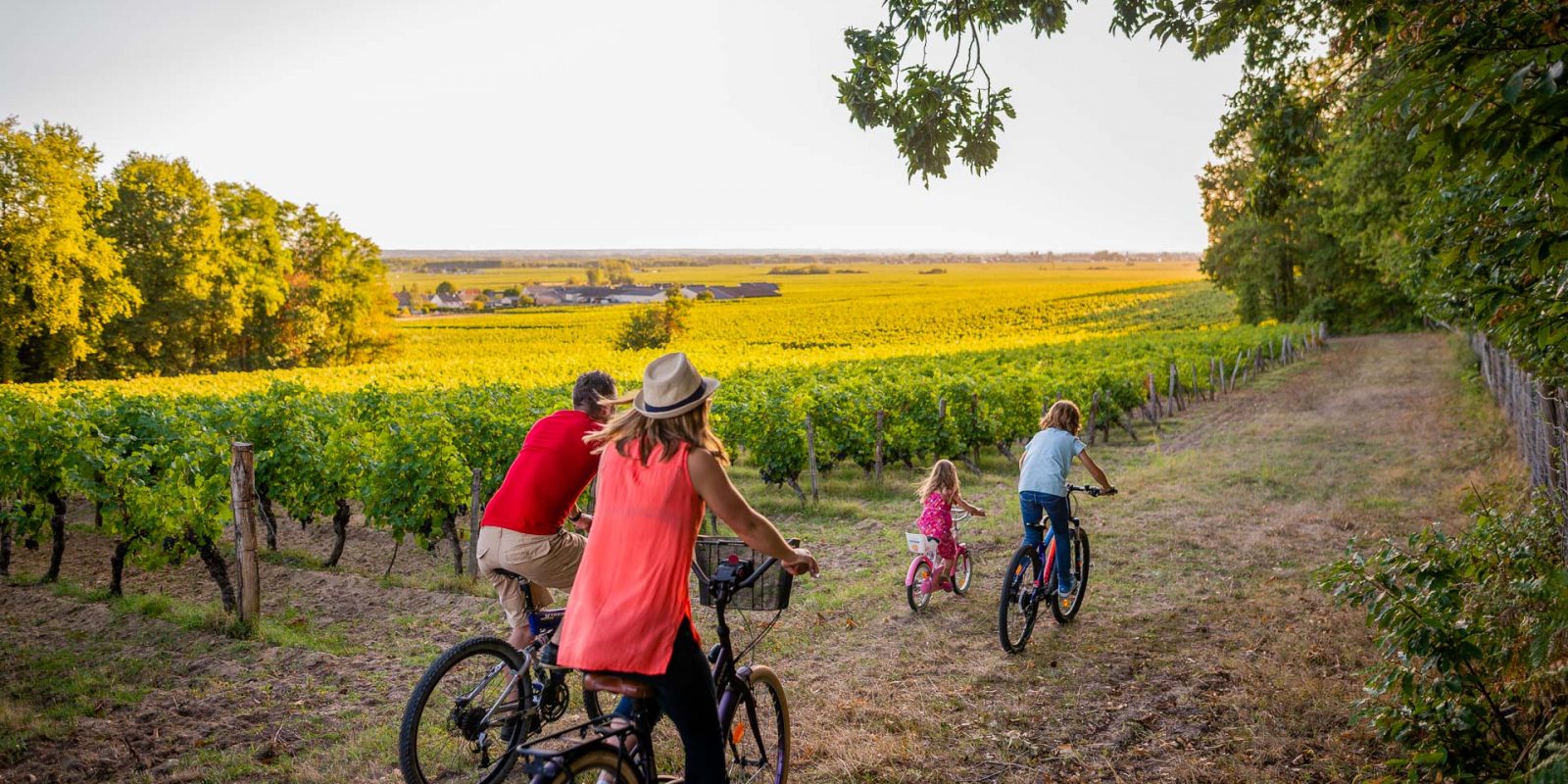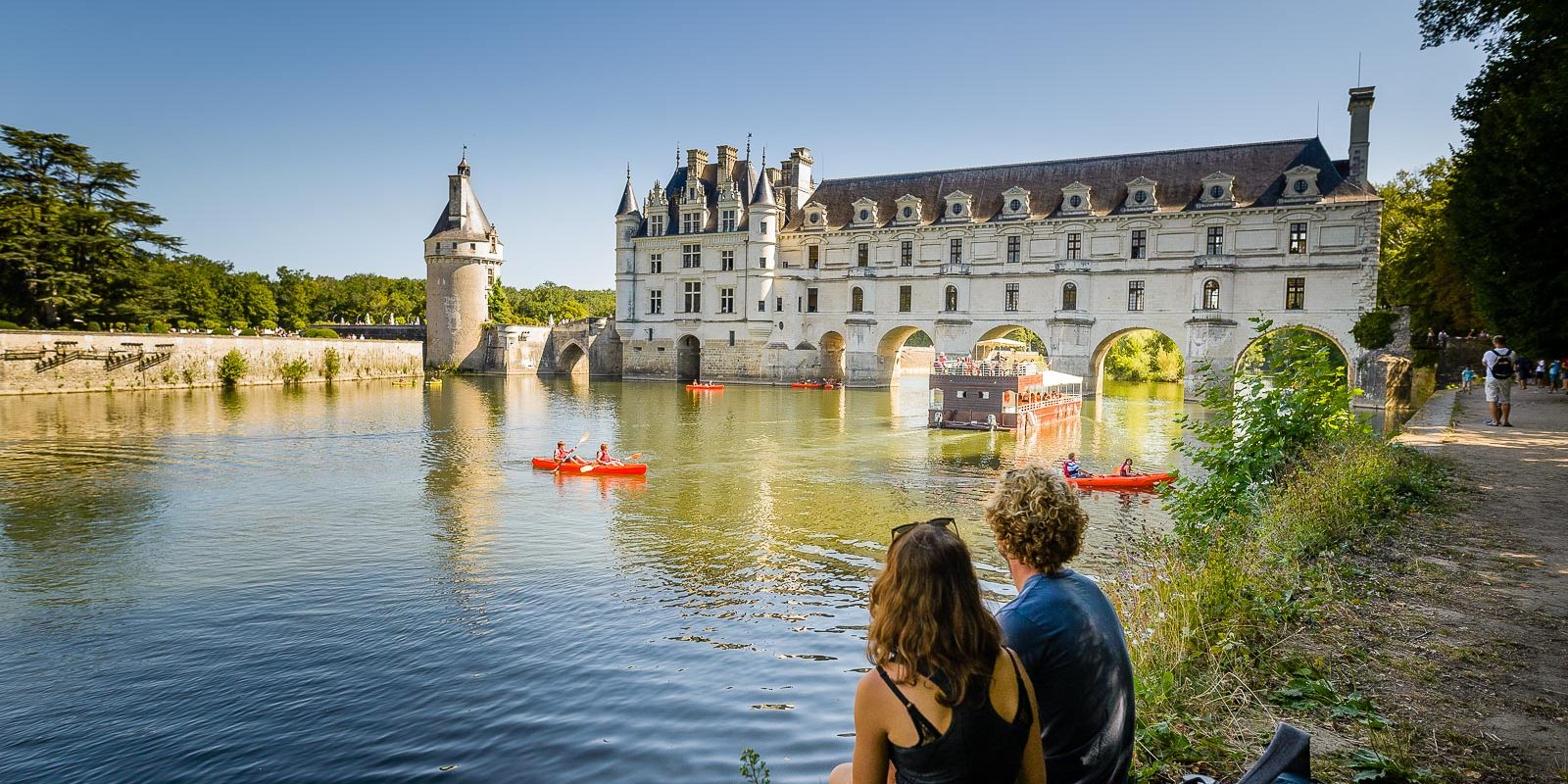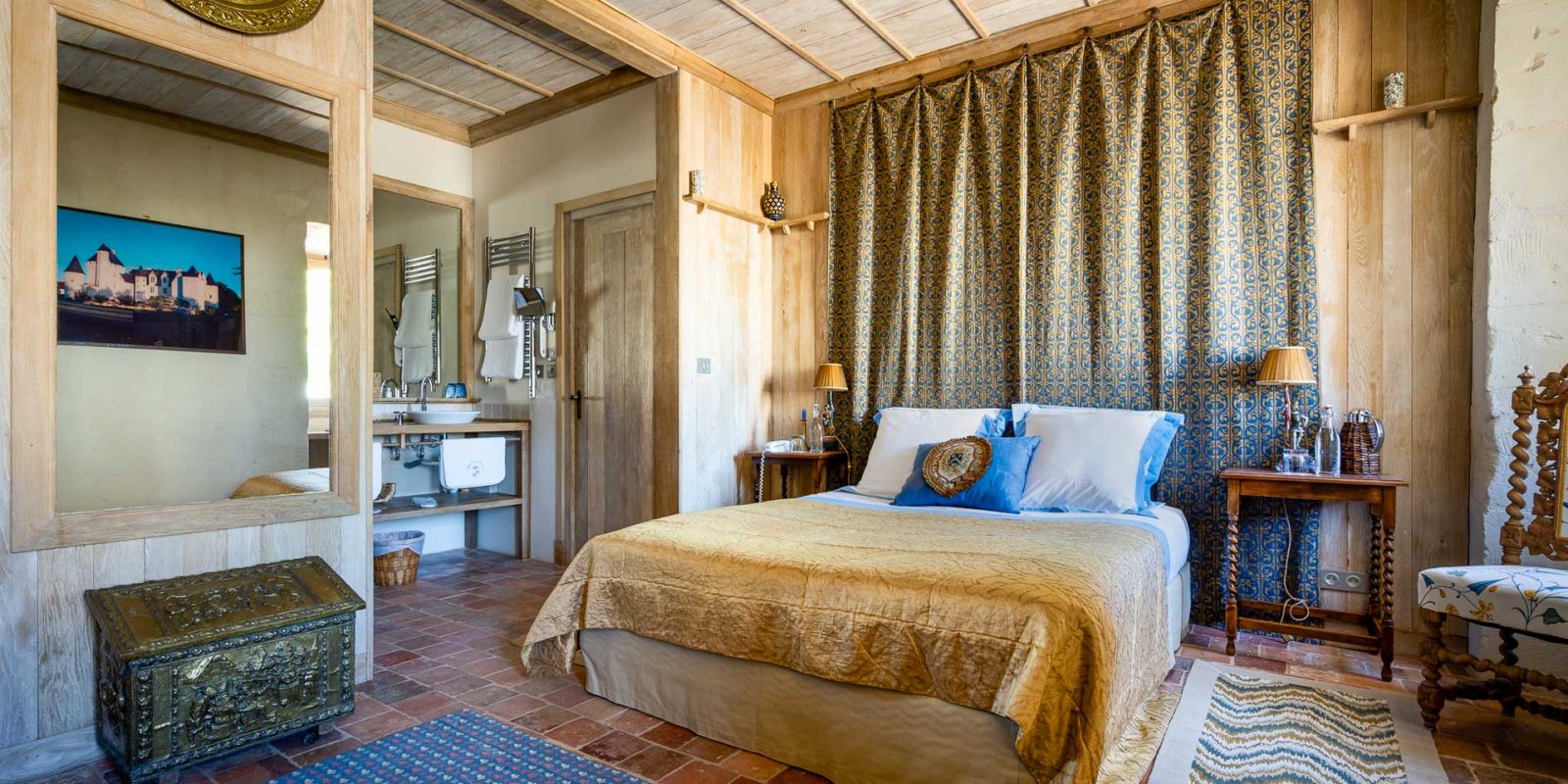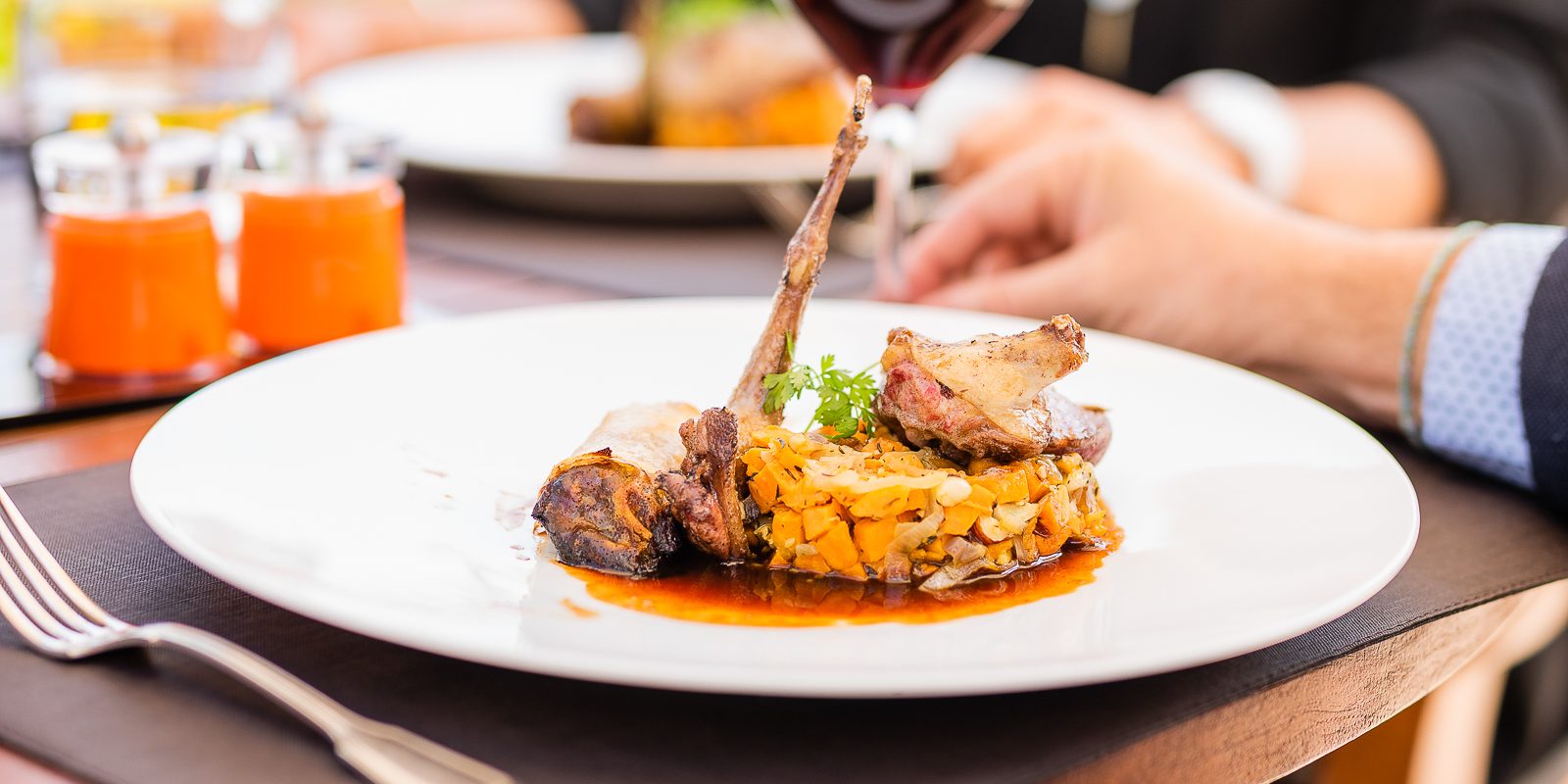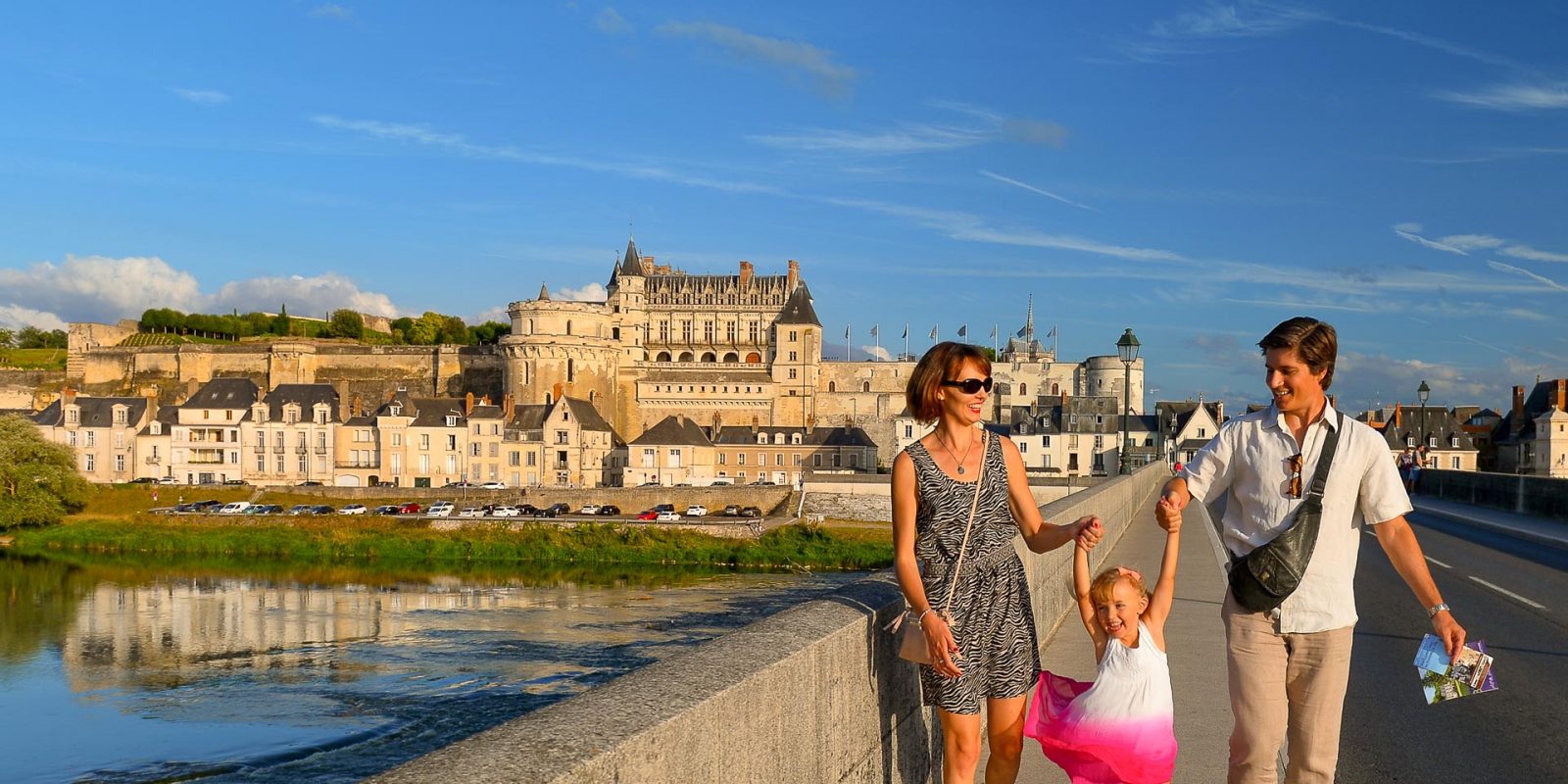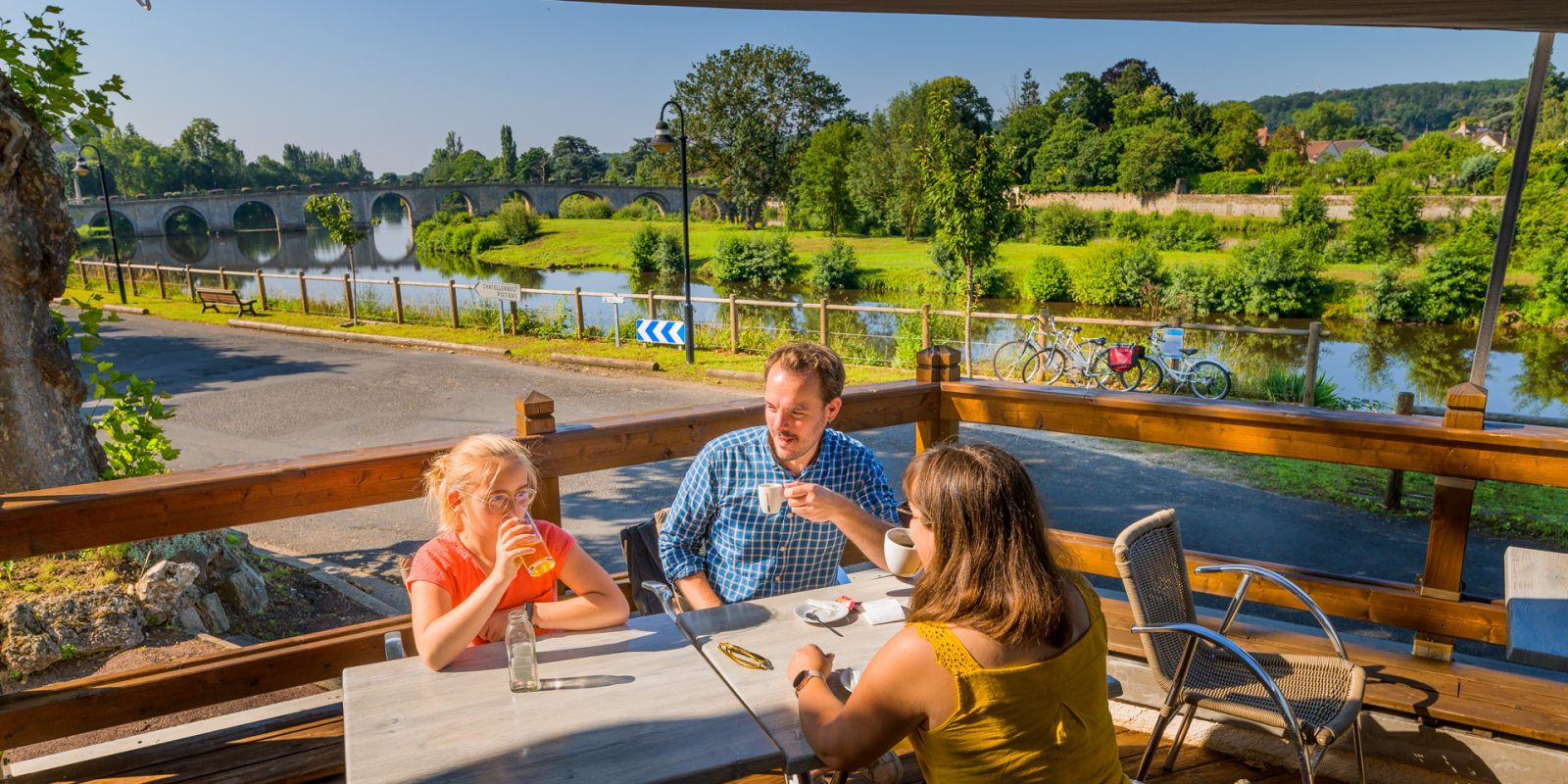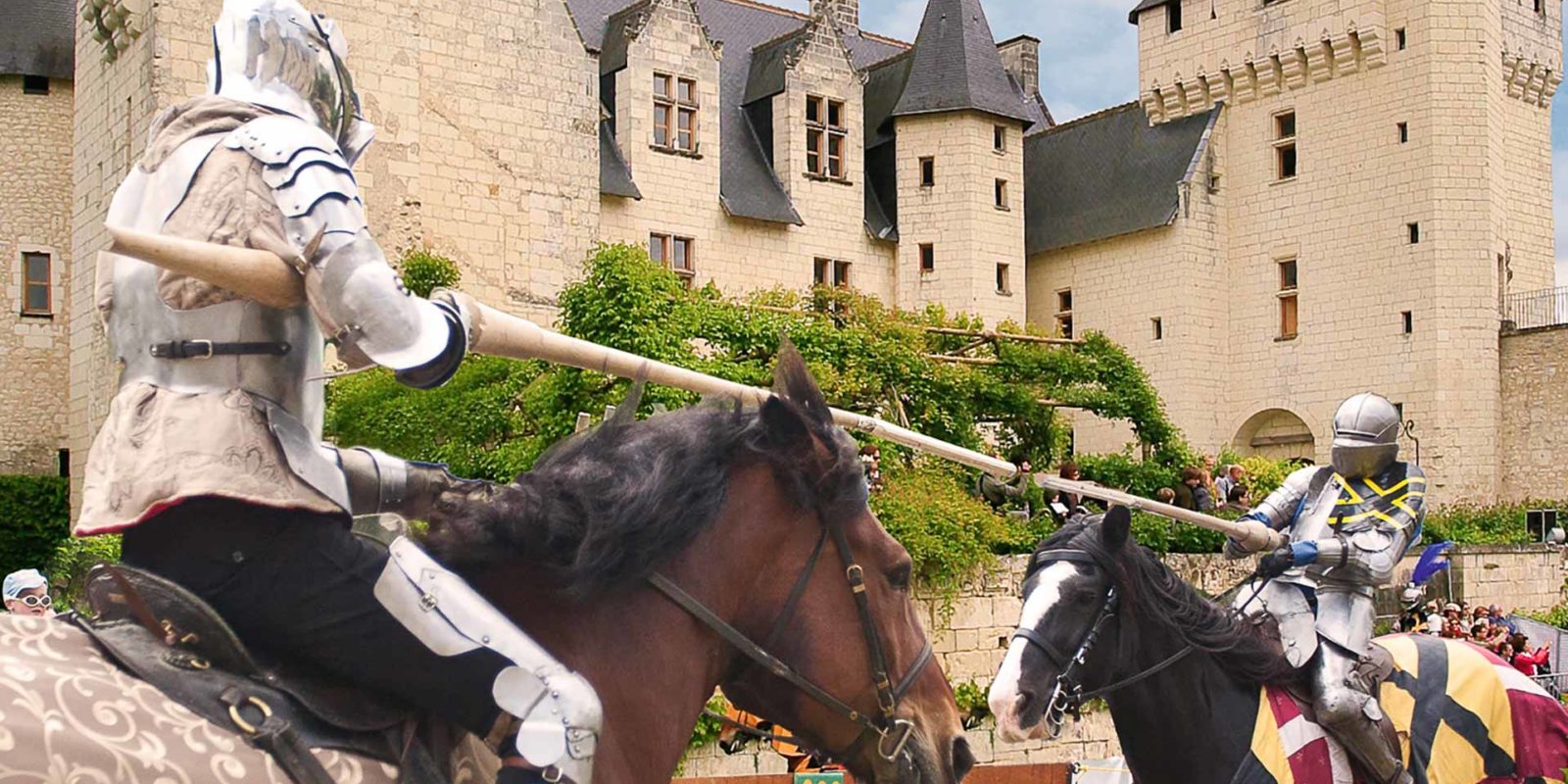Flower power
Immersing yourself in the gardens of Touraine in the Loire Valley is a rejuvenating experience, one of sensual pleasure prompted by the delightful combination of colours and delicate fragrances.
What better antidote to this troubled world than an invitation to peacefully contemplate and let yourself unwind in the poetic scenery of the gardens of Touraine. Ornamental gardens, fairytale gardens, formal gardens, kitchen gardens and conservatories… they can be spectacular or intimate, and always uplifting.
Villandry is a must-see icon for garden enthusiasts and for everyone else obviously enchanted by this superb tableau of plants, graphic lines and harmonious colours. From the château itself, the terraces or the cool pathways lined with lime trees, there are plenty of viewpoints over the four tiers of gardens which make perfect photos for lovers wishing to create romantic memories. The kitchen garden is a rapture of purples and oranges, outlined by finely clipped box hedges.
The soothing presence of the water in the canal and the fountains, the intricate pavilions adorned with roses, the array of colour provided by the tulips, dahlias and begonias as the seasons pass and the tall, slender, gracefully shaped yew trees make this an unusual visit to be treasured. Every year at the beginning of July, the gardens are bathed in the soft light of thousands of candles for their enchanting Nights of a Thousand Lights.
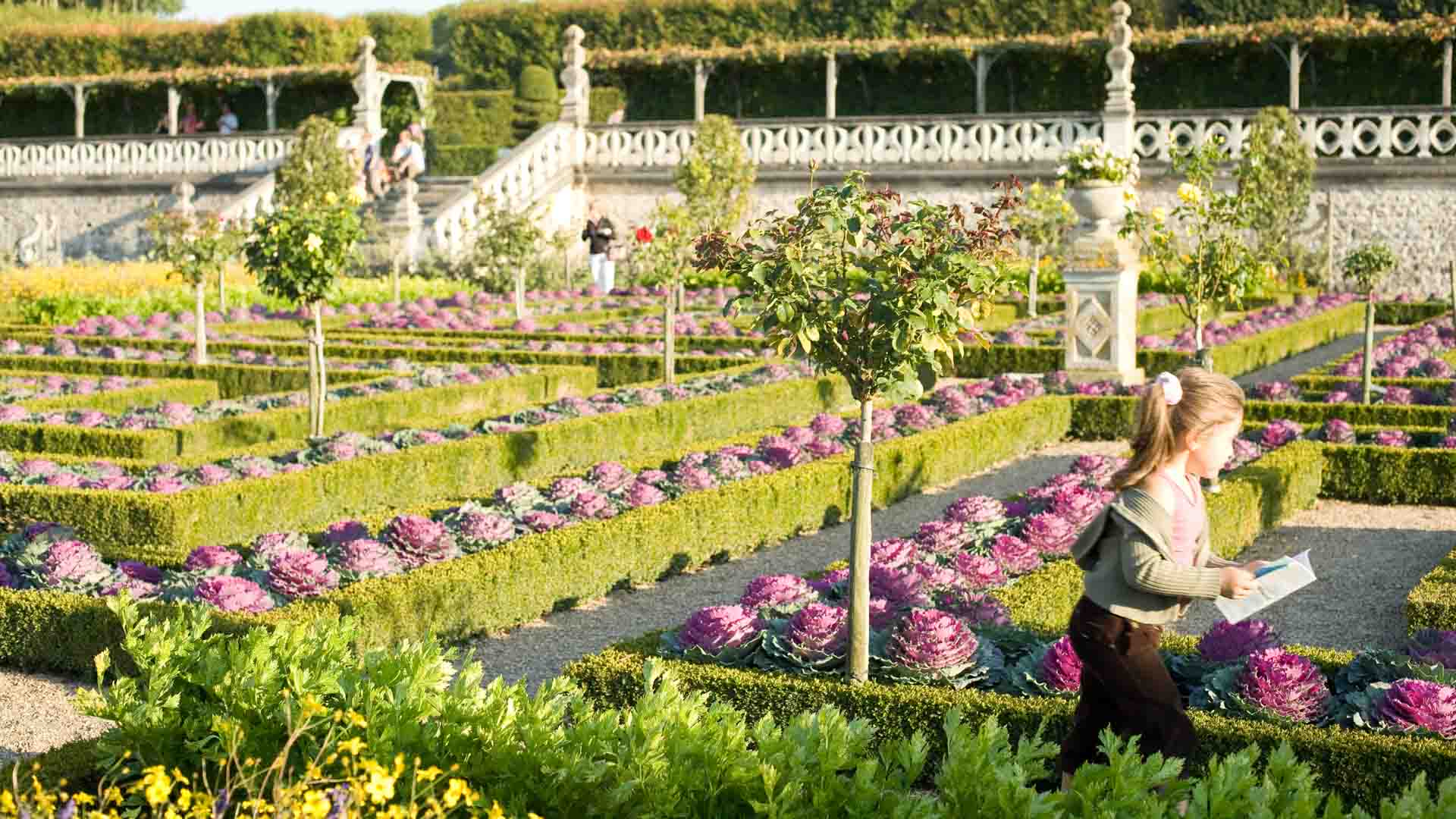
Another place, another time – one of goblins, ogres and fairies at the Château du Rivau and its 14 gardens with evocative names straight from the world of fairy tales and a happy childhood full of imagination. Visitors are spellbound by the artistic sensitivity of the compositions, shapes and colours accompanied by comic touches in this amazing collection of enormous contemporary works that François Rabelais, the master himself, would have been proud of. Between Chinon and Richelieu, Le Rivau is a happiness potion that should definitely not be consumed in moderation.
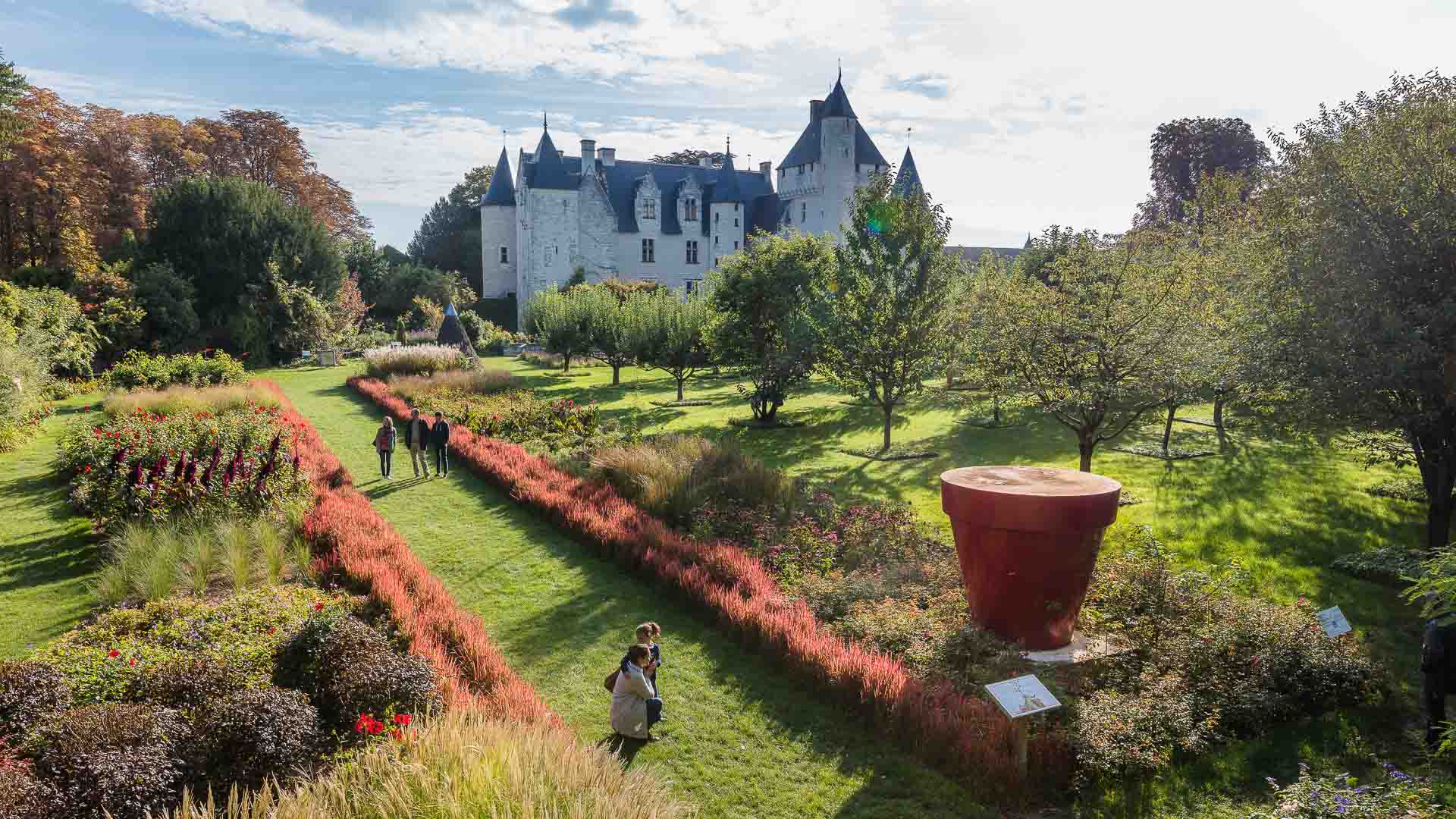
In Amboise, Château-Gaillard, long thought to have disappeared forever, is a former royal estate left by Charles VIII to Dom Pacello, the famous ‘master gardener’ from Naples who worked for three French kings. In the ‘Jardins du Roy’, Pacello grew the first orange trees to be planted on French soil, developed a remarkable collection of citrus fruits and even went on to invent orange tree boxes and warm greenhouses! Open to the public since the summer of 2016, visitors walk along the ‘7 pathways to paradise’ recreated in the estate, which lead to the greenhouses and their orange tree collection, the orchard and the troglodyte dovecot, among other features. And finally, what better way to cool off on a hot summer’s day than with a glass of delicious orange juice freshly squeezed on the premises!
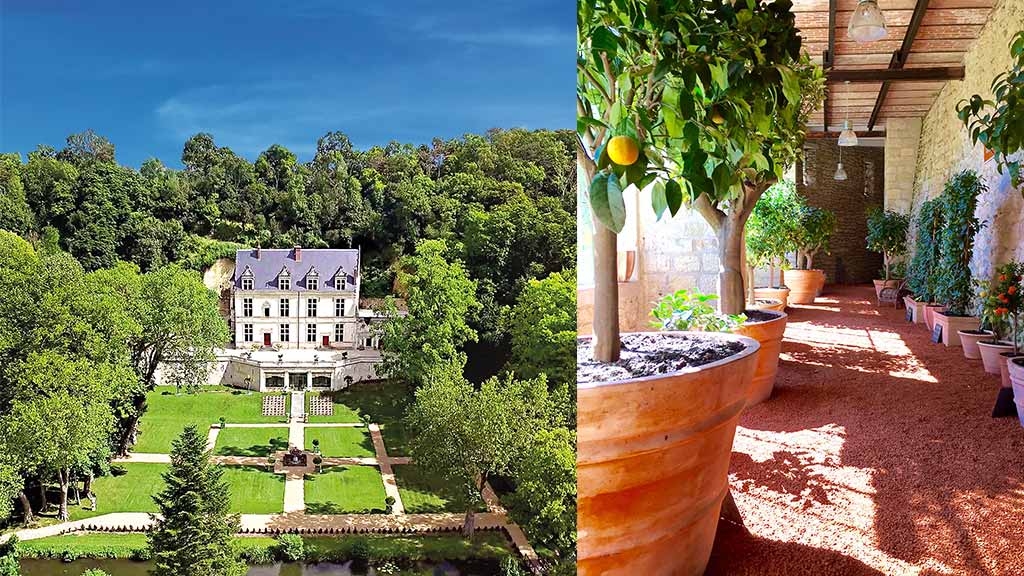
On the wine-growing terroirs where the sweet, fruity or sparkling Chenin grapes glisten, there are two unique examples of the art of the garden on each side of the royal river in the Loire Valley. On the Montlouis side, La Bourdaisière is home to an astonishing national tomato conservatory, with tomatoes of every shape, colour and origin, and a bright, contemporary garden of 5,000 dahlias. On the Vouvray side, Valmer and its 16th and 17th century terraced gardens, arbours, roses and aromatic Mediterranean scents and fountains, bring a delicious fragrance of Tuscany to the heart of the Loire Valley. The kitchen garden is a hymn to respect for nature, with its insect hotels and a unique experience with its edible flowers and plants.
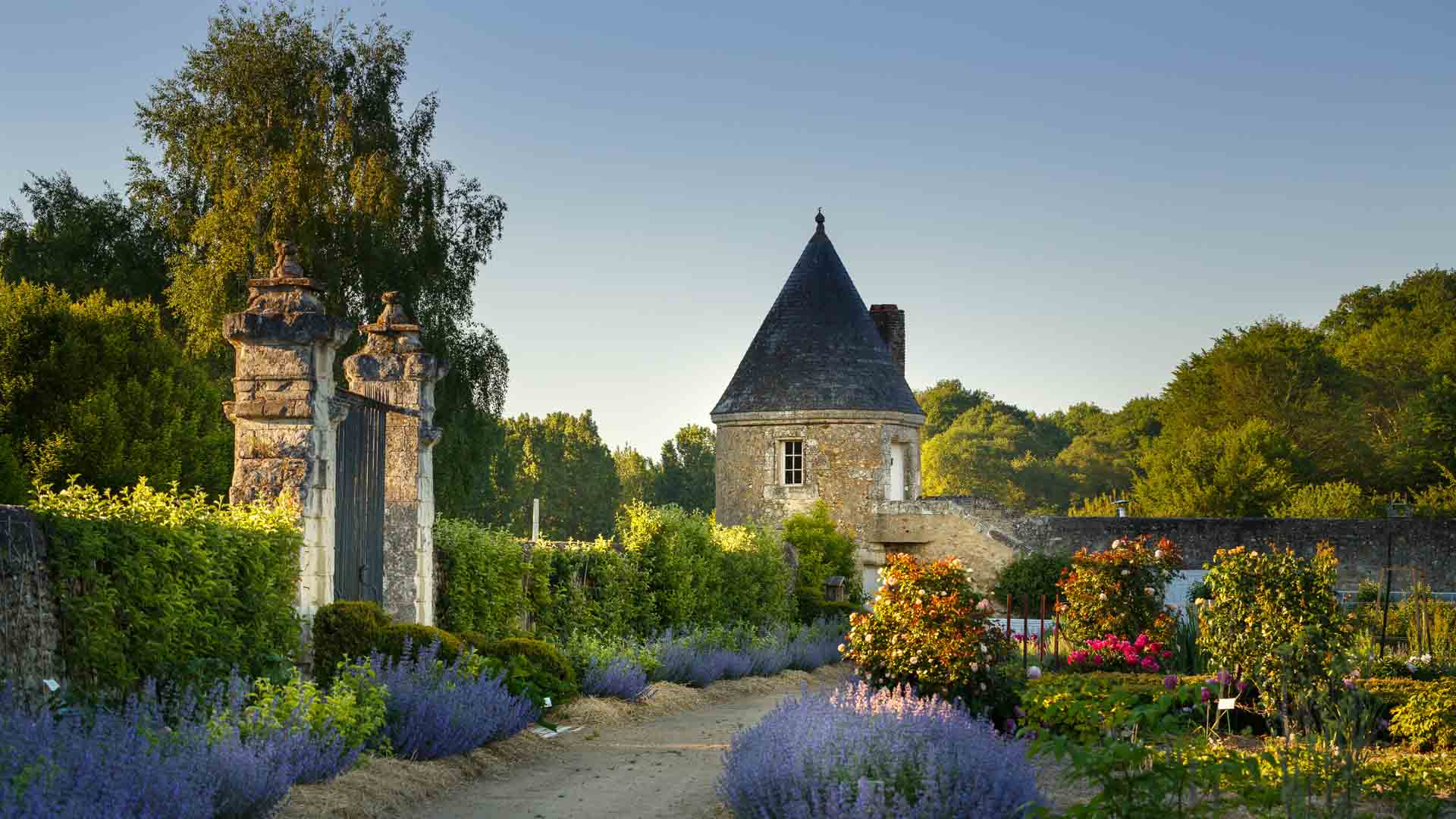
The new garden at the Saint-Cosme Priory – Demeure de Ronsard, at La Riche on the outskirts of Tours, is more contemporary. Here, there are 12 different garden areas, including a garden full of plants with fragrances from elsewhere, heirloom rose pergolas and Ronsard’s kitchen garden with its ‘exotic’ vegetables, all of which feature materials specifically chosen for their aesthetic style, such as oxidised metal, terracotta and elegant tree species like the locust tree and the chestnut. The Demeure de Ronsard is a harmonious blend of the spirit of a priory and a more modern artistic flourish, a perfect place to meditate as you calmly stroll around.
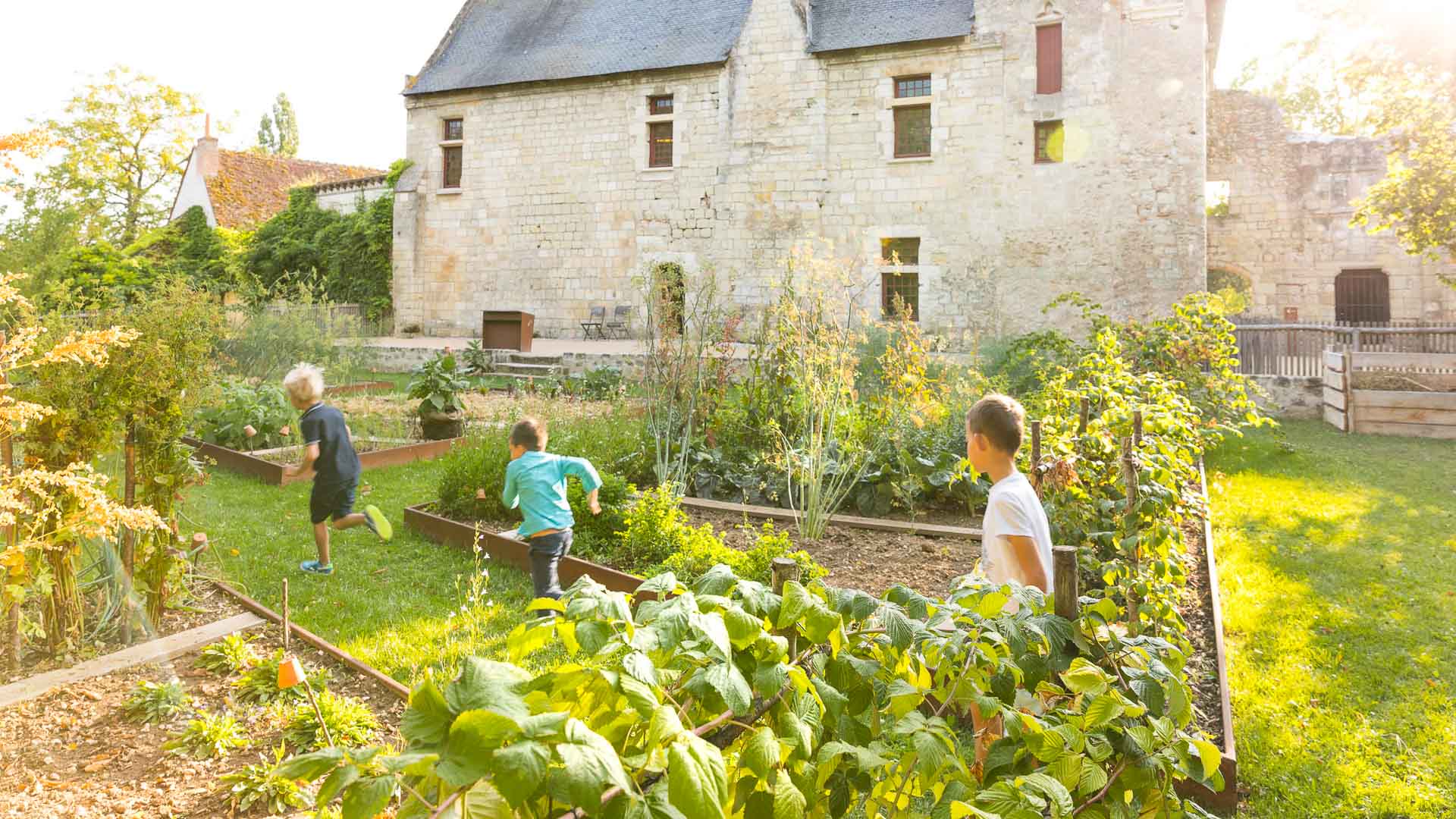
At Chédigny, the rose takes pride of place, for in this pretty little village on the banks of the river Indrois, not far from Loches or Montrésor in the Loire Valley, there are almost 800 rose trees, most of them ancient. You’ll find this queen of all flowers in the streets, instead of pavements, making Chédigny the only village in France classified as a ‘Remarkable Garden’. This rustic floral trail sets off the beautiful neighbouring private gardens which are maintained and glorified with the same verve and passion as the village flowerbeds. Here, the whole population has green fingers and invites visitors to enjoy the most beautiful flowers there are, for free and forever. The old presbytery garden has been completed recreated and is now open to visitors. A haven of peace and serenity, it also offers visitors a bite to eat in a timeless setting.
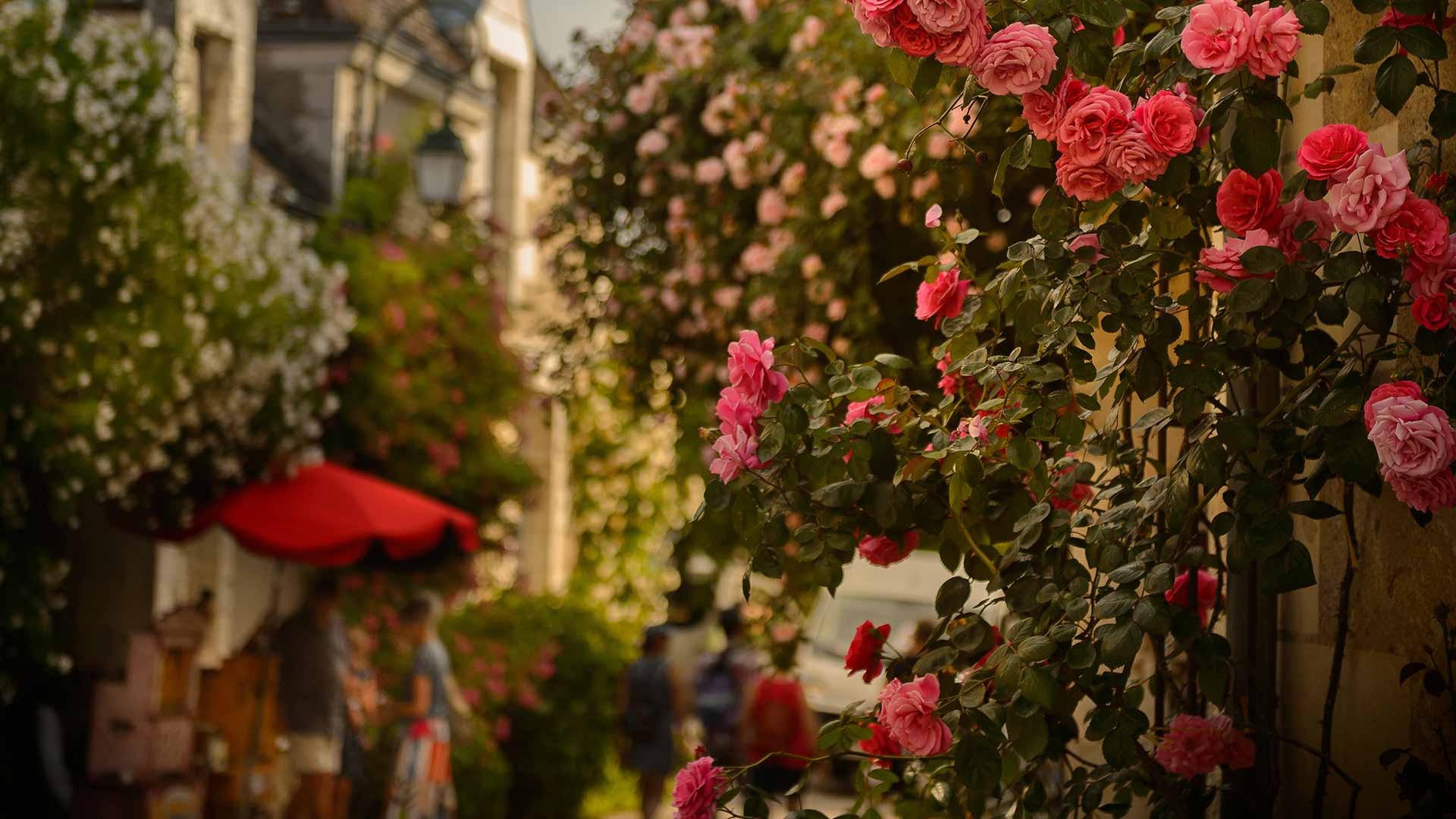
Very close to the magnificently restored Château d’Azay le Rideau, which gazes at its reflection in a mirror of water surrounded by lovely parkland, the Château de l’Islette, which witnessed the turbulent love affair between Rodin and Camille Claudel, is a paradise for the idle. Let your hand brush the cool water as you drift in a boat down the Indre which runs through the estate, before lazily stretching out in the shade of the mature trees for a blissful snooze or an inspiring read.
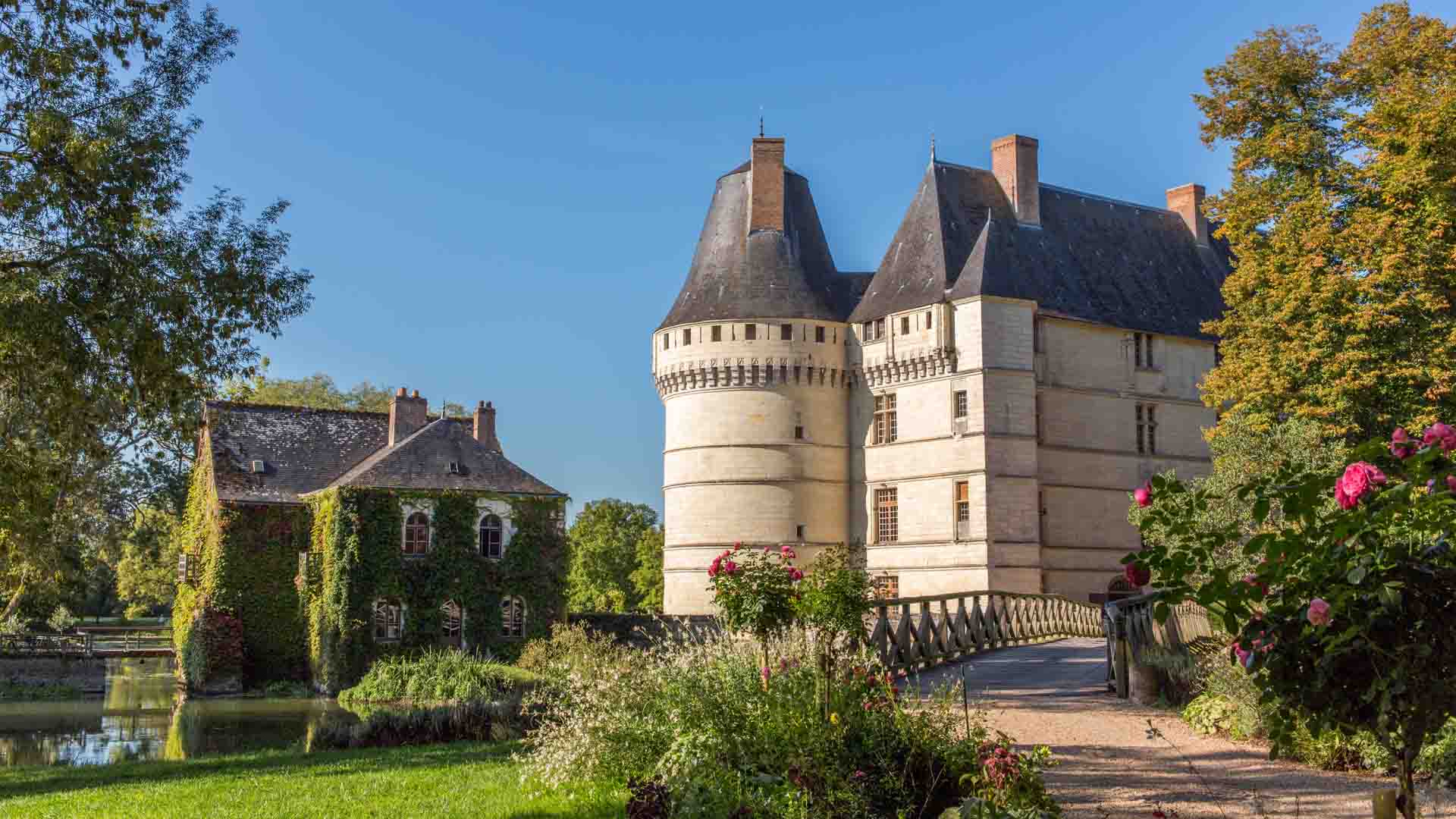
And what’s there to say about the châteaux of Amboise, Chenonceau, Ussé – Sleeping Beauty’s castle – or the Clos Lucé manor house, other than their parks, gardens and mazes are the ornaments of choice for prestigious dwellings.
